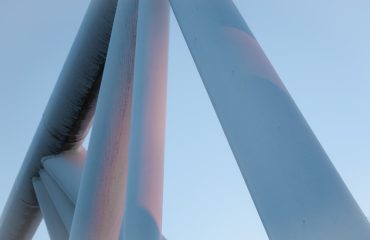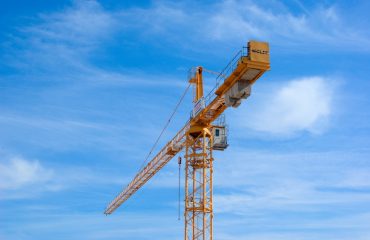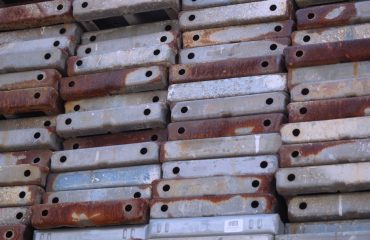Shot blasting is a powerful surface treatment technique used across various industries to clean, prepare, and finish a wide range of materials. This comprehensive guide will delve into the intricacies of the shot blasting process, explaining its mechanics, applications, and benefits.
Understanding the Shot Blasting Process: The Fundamentals
Shot blasting involves propelling a stream of abrasive media, typically small metal pellets or shot, at high velocity onto a surface. This high-impact process removes contaminants, such as rust, scale, paint, and other surface imperfections, leaving behind a clean, prepared substrate. The process can be tailored to achieve various surface finishes, from a roughened texture to a smooth, polished one, depending on the chosen media, pressure, and blasting parameters.
The process typically involves a shot blasting machine, which houses a wheel or turbine that accelerates the abrasive media. This media is then propelled through a nozzle towards the target surface. The spent media is then typically collected and recycled, minimizing waste and maximizing efficiency. Different types of machines exist, including wheel blasters, airless blasters, and centrifugal blasters, each with its own advantages and disadvantages depending on the application.
Types of Shot Blasting Media: Choosing the Right Abrasive
The choice of abrasive media is crucial in determining the effectiveness and outcome of the shot blasting process. Several types of media are available, each with unique properties and suitability for specific applications. Common types include:
- Steel shot: A widely used, cost-effective option suitable for various applications, offering a balance between cleaning power and surface finish.
- Steel grit: Sharper and more aggressive than shot, steel grit is ideal for removing heavy rust, scale, and coatings, but can create a rougher surface finish.
- Cast iron shot: Offers a good compromise between cleaning power and surface finish, often chosen for its durability and longevity.
- Glass beads: A gentler abrasive, often used for delicate surfaces where a smooth, fine finish is required. Ideal for deburring and surface preparation before painting.
- Ceramic media: Various ceramic materials are used, offering different levels of hardness and aggressiveness, suitable for specific applications and material types.
Selecting the appropriate media requires careful consideration of the material being blasted, the desired surface finish, and the level of contamination that needs to be removed.
Applications of Shot Blasting: Across Diverse Industries
Shot blasting is a versatile technique with a wide range of applications across many industries. Its use extends to:
- Metal fabrication: Cleaning and preparing metal components before painting, coating, or welding.
- Automotive industry: Removing rust and paint from car bodies, preparing them for repainting or refurbishment.
- Aerospace industry: Cleaning and preparing aircraft components for inspection and maintenance.
- Construction industry: Cleaning and preparing steel structures, reinforcing bars, and other components.
- Marine industry: Removing marine growth and corrosion from ships and other marine structures.
- Power generation: Cleaning and preparing turbine blades and other components in power plants.
The adaptability of shot blasting makes it an invaluable process in maintaining and improving the quality and lifespan of various components and structures.
Safety Precautions in Shot Blasting: Protecting Workers and Equipment
Shot blasting is a powerful process that poses potential safety hazards if not handled correctly. Implementing stringent safety measures is essential to protect workers and equipment. These include:
- Personal Protective Equipment (PPE): Workers must wear appropriate PPE, including respirators, safety glasses, hearing protection, and protective clothing to prevent injury from flying debris and airborne particles.
- Containment systems: Effective containment systems are crucial to prevent the spread of abrasive media and dust, minimizing environmental impact and maintaining a safe working environment.
- Regular maintenance: Regular inspection and maintenance of the shot blasting equipment are vital to ensure its safe and efficient operation.
- Training and supervision: Proper training and supervision of personnel are crucial to ensure they understand and follow safety procedures.
- Emergency procedures: Clear emergency procedures should be in place to handle any accidents or incidents.
Prioritizing safety is paramount in any shot blasting operation, ensuring both worker well-being and the longevity of the equipment.
Benefits of Shot Blasting: Enhanced Quality and Efficiency
Shot blasting offers numerous benefits that make it a preferred surface treatment method in many industries. These include:
- Improved surface quality: Creates a clean, prepared surface ideal for painting, coating, or other finishing processes, resulting in improved adhesion and durability.
- Increased efficiency: A relatively fast and efficient process compared to other surface preparation methods, minimizing downtime and production costs.
- Enhanced product lifespan: By removing contaminants and imperfections, shot blasting extends the lifespan of components and structures, reducing the need for frequent replacements.
- Cost-effectiveness: While initial investment in equipment might be significant, the long-term cost savings from improved efficiency and reduced maintenance outweigh the initial expense.
- Environmental friendliness: Modern shot blasting systems incorporate recycling of abrasive media, minimizing waste and environmental impact.
The combination of improved quality, efficiency, and cost-effectiveness makes shot blasting a highly attractive option for many industrial applications.
Shot blasting is a powerful and versatile surface treatment technique with wide-ranging applications. By understanding its principles, applications, and safety considerations, industries can leverage its benefits to improve product quality, efficiency, and longevity.
Tags: shot blasting, abrasive blasting, surface preparation, metal cleaning, industrial cleaning




